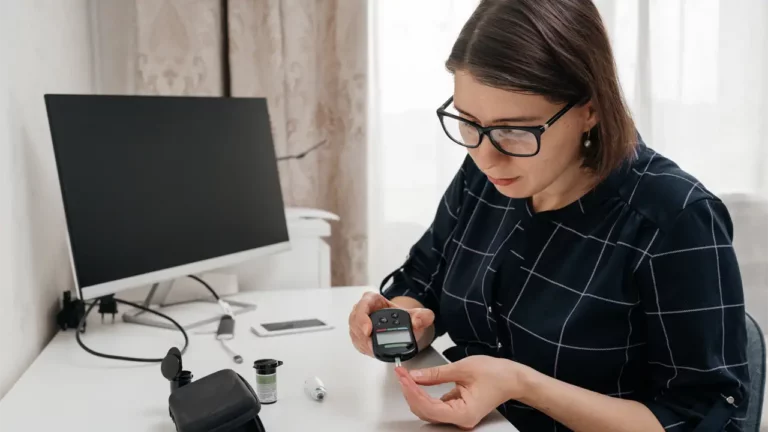Chronic Obstructive Pulmonary Disease (COPD) is a chronic lung disease that affects millions of people around the world. COPD can significantly impact a person’s quality of life and daily activities, making it essential to manage the disease effectively. While there is no cure for COPD, there are many ways to manage the condition and reduce the frequency and severity of symptoms. COPD management at home is an integral part of overall care, and this guide will provide helpful tips on managing COPD at home. This guide is a valuable resource for individuals with COPD and their caregivers and should not be a substitute for professional medical advice.
Understanding COPD
Symptoms of COPD
The symptoms of COPD can vary depending on the stage of the disease. Still, some common symptoms include chronic cough, wheezing, shortness of breath, chest tightness, fatigue, and frequent respiratory infections. These symptoms can significantly impact a person’s quality of life, and monitoring and managing them effectively is essential.
Stages of COPD
COPD is typically classified into four stages based on the severity of symptoms and lung function. The stages range from mild to severe, with each set having different treatment options and management strategies.
Causes of COPD
COPD is often caused by long-term exposure to irritants such as cigarette smoke, air pollution, and workplace chemicals. In some cases, genetic factors may also play a role in the development of COPD.
Diagnosis of COPD
COPD can be diagnosed through various tests, including lung function tests, chest x-rays, and CT scans. Getting an accurate diagnosis to manage the disease and reduce symptoms effectively is essential.
Comprehensive COPD Management Plan
A comprehensive management plan can help patients with COPD manage their symptoms, reduce the risk of exacerbations, and improve their quality of life. With the use of technology, such as wearable devices and mobile apps, remote patient monitoring allows doctors to keep track of their patient’s symptoms and adjust their treatment plans as needed. Here are some steps to consider when developing a COPD management plan:
A. Work with Your Doctor: COPD management requires a collaborative approach between you and your healthcare provider. Your doctor can help you develop a comprehensive management plan that is tailored to your individual needs and circumstances. This plan may include a variety of treatments, including medications, oxygen therapy, and pulmonary rehabilitation. Be sure to discuss any symptoms you are experiencing and any concerns you may have about your treatment. Regular check-ins with your doctor can help you track the effectiveness of your management plan and make adjustments as needed.
It is important to note that every individual’s experience with COPD is different, and treatment plans will vary accordingly. By working closely with your doctor, you can customize your management plan to meet your specific needs and goals.
B. Identify and Avoid Triggers: Triggers can worsen symptoms for people with COPD, making breathing difficult and increasing the risk of exacerbations. Common triggers include air pollution, respiratory infections, and exposure to irritants such as dust or smoke. Identifying your triggers is an essential step in managing your COPD.
Once you have identified your triggers, please avoid them as much as possible. For example, you may want to wear a mask when working with chemicals or other irritants, avoid areas with high levels of air pollution or practice good hygiene to reduce your risk of respiratory infections.
C. Use Inhalers and Other Medications as Prescribed: Inhalers and other medications can help manage COPD symptoms and reduce the risk of exacerbations. However, it is essential to use these medications as prescribed by your doctor.
Different types of inhalers and medications work in different ways, and it is essential to use them correctly to ensure you get the maximum benefit. Tell your doctor if you are experiencing any side effects or if your symptoms are not improving.
D. Participate in Pulmonary Rehabilitation: Pulmonary rehabilitation programs can effectively improve lung function, reduce symptoms, and improve the quality of life for people with COPD. These programs typically include exercise, breathing techniques, and education about COPD management.
Talk to your doctor about whether a pulmonary rehabilitation program may be appropriate for you. Participation in these programs can help you feel more in control of your symptoms and improve your overall well-being.
E. Quit Smoking: Smoking is the leading cause of COPD, and quitting smoking is the most critical thing you can do to manage your COPD. Talk to your doctor about smoking cessation options and strategies if you smoke.
Quitting smoking can be challenging, but many resources are available to help you succeed. Your doctor can recommend various approaches, including nicotine replacement therapy, medication, and counseling.
F. Monitor Your Symptoms: Regularly monitoring your symptoms can help you identify any changes in your condition and take action before an exacerbation occurs. Keep a log of your symptoms, including how often they occur and their severity, and share this information with your doctor.
You can become more aware of your body and condition by monitoring your symptoms. This can help you feel more in control of your COPD and help your doctor make informed decisions about your treatment plan.
G. Have a Plan for Exacerbations: Even with the best management plan, exacerbations can still occur. It is essential to plan what to do if your symptoms worsen, including when to seek medical attention.
Your doctor can help you create an exacerbation action plan that outlines the steps you should take in case of an emergency. This plan may include medications, when to call your doctor, and when to go to the emergency room.
H. Stay Active and Maintain a Healthy Lifestyle: Staying active and maintaining a healthy lifestyle can help improve lung function, reduce symptoms, and improve the quality of life for people with COPD. Talk to your doctor about appropriate exercise and dietary recommendations.
Regular exercise can help strengthen your respiratory muscles and improve your overall fitness. A healthy, balanced diet can also provide the nutrients you need to support your respiratory health. Your doctor can help you develop an exercise and dietary plan appropriate to your specific needs and abilities.
COPD Exacerbations
Understanding Exacerbations of COPD are periods when symptoms worsen, and breathing becomes more difficult. Various factors, including respiratory infections, air pollution, and irritant exposure, can cause exacerbations. It’s essential to be aware of the signs of exacerbations, including increased shortness of breath, coughing, wheezing, and chest tightness.
Prevention of Chronic Obstructive Pulmonary Disease Exacerbations
Preventing exacerbations is an essential part of COPD management. This can involve avoiding triggers and staying up to date on vaccinations. Your doctor may also recommend a COPD management plan that includes medications, inhalers, and lifestyle changes.
COPD Treatment
Treatment can help if you experience a worsening, so it’s essential to seek medical attention as soon as possible. Treatment may involve oxygen therapy, medication, and in some cases, hospitalization. Your doctor can guide the best course of treatment based on the severity of your symptoms.
Managing Post-Exacerbation Recovery
After an exacerbation, it’s essential to promote recovery and prevent future exacerbations. This can involve continuing medication use, participating in pulmonary rehabilitation, and avoiding triggers. Your doctor can guide post-exacerbation management to help you stay healthy and manage your COPD symptoms.
Lifestyle Changes in Managing COPD
Managing COPD can be challenging, especially for those with moderate to severe COPD. The disease’s progressive nature and higher risk of acute exacerbations of COPD can be a burden for patients. However, proper management of COPD can reduce symptoms, improve quality of life, and prevent exacerbations. COPD management may include pharmacologic management, pulmonary rehabilitation programs, and lifestyle changes.
COPD management aims to reduce symptoms, prevent exacerbations of COPD, and improve outcomes in chronic obstructive pulmonary disease. The American Thoracic Society guideline and American College of Chest Physicians recommend that patients with chronic obstructive pulmonary disease participate in a pulmonary rehabilitation program to improve lung function, reduce symptoms, and prevent disease progression. A systematic review and meta-analysis showed that pulmonary rehabilitation programs effectively reduced symptoms of COPD and the rate of COPD exacerbations.
In addition to a rehabilitation program, managing COPD may require additional treatment, such as noninvasive positive pressure ventilation, chronic obstructive pulmonary disease therapy, and maintenance treatment. Alpha-1 antitrypsin deficiency, a common cause of COPD, may require additional treatment. Patients with chronic obstructive pulmonary disease may need to manage their COPD symptoms with a treatment regimen prescribed by their healthcare provider.
Patients with COPD may need lifestyle changes to manage their symptoms effectively. The Mayo Clinic patient education program recommends that patients with COPD quit smoking, exercise regularly, and eat a healthy diet. The program also recommends that patients with COPD avoid exposure to irritants such as dust and pollution, which can cause exacerbations in chronic obstructive pulmonary disease.
Patients with stable chronic obstructive pulmonary disease should monitor their symptoms and be aware of signs of COPD exacerbations, such as symptoms of an infection or increased shortness of breath. The COPD assessment test can help patients track their symptoms and determine when they need additional treatment.
Patients with advanced COPD or severe chronic obstructive pulmonary disease may benefit from lung volume reduction surgery, but this is not appropriate for all patients. The American Lung Association and American Thoracic Society guidelines recommend that lung volume reduction surgery be reserved for patients with advanced COPD who have tried other treatments without success.
Managing COPD requires a comprehensive disease management program that includes a management plan, clinical practice guidelines, and regular follow-ups with a healthcare provider. The progressive nature of the disease and the risk of COPD exacerbations require ongoing monitoring and treatment to improve chronic obstructive pulmonary disease outcomes.
In conclusion, lifestyle changes, such as quitting smoking, exercising regularly, and avoiding irritants, can help manage COPD symptoms. Pulmonary rehabilitation programs and additional treatments can also help reduce symptoms and prevent chronic obstructive pulmonary disease exacerbation. Proper management of COPD can improve chronic obstructive pulmonary disease outcomes and reduce the risk of disease and lung cancer.
Management of COPD through DrKumo Advanced RPM Technology
In addition to working closely with your healthcare team, remote patient monitoring can also be essential in managing COPD. This can be especially helpful for people with COPD who may have difficulty leaving their homes for frequent doctor’s appointments or live in remote areas with limited access to healthcare. By monitoring their symptoms remotely, doctors can detect exacerbations early and make timely interventions, which can help prevent hospitalizations and improve outcomes for people with COPD.
DrKumo is a leader in developing highly scalable, continuous, real-time remote patient monitoring solutions for Chronic Disease Management, Acute Care, Post-Operation, and Hospital Care at Home. Using DrKumo rpm technology to monitor your symptoms, your doctor can keep track of your condition and adjust your treatment plan as needed, helping you manage your symptoms and improve your quality of life. DrKumo remote patient monitoring can benefit those who have difficulty leaving their homes or living in remote areas with limited access to healthcare. By working with your healthcare team and incorporating remote patient monitoring into your COPD management plan, you can actively manage your condition and live a whole and busy life.
Takeaway
In conclusion, COPD is a chronic condition affecting millions worldwide. However, with proper management and treatment, people with COPD can improve their quality of life and slow the progression of the disease. By understanding COPD, managing symptoms, and developing a management plan, people with COPD can live entire and active lives. If you have COPD, it’s essential to work closely with your doctor and healthcare team to manage your symptoms and find the treatment plan that works best for you. Proper care and support make it possible to cope with COPD and maintain a high quality of life.
If you have COPD, I encourage you to talk to your healthcare provider about the benefits of remote patient monitoring. Contact us now!








